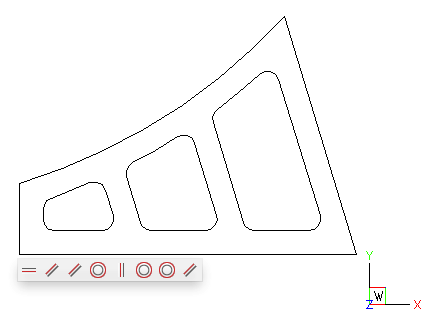New versions contain many functions requested by developers of engineering applications for parametric drawing, direct modeling, assembly design, and kinematic simulation
Gent, Belgium, Merrimack NH, USA: June 27, 2012 – Bricsys today announced releases 7.0 of LGS 2D and 6.0 of LGS 3D constraint solver technology components used by developers of engineering application to implement parametric design functions for end users.
The intellectual properties rights of LGS 2D and 3D were acquired from LEDAS by Bricsys in October, 2011. The software development team of Bricsys Technologies Russia, a fully owned subsidiary of Bricsys NV and led by Dr. Dmitry Ushakov, continues the development of the state-of-the-art constraint solving technology currently embedded into dozen engineering applications including Bricscad V12.
“By releasing new versions of LGS 2D and 3D constraint solvers with many new functions we demonstrating our commitment to supporting existing customers of this amazing technology, which started to find more new customers after the recent acquisition,” said Erik De Keyser, CEO of Bricsys. “At the same time, we intensively use this technology to deliver new advanced functions for Bricscad users.”
LGS 2D version 7.0
LGS 2D constraint solver serves as a computational engine for parametric drawing and sketching. Based on a combination of advanced decomposition methods and a reliable non-linear solver, LGS 2D solves drawings with thousand geometric and dimensional constraints in less than a second.
Version 7.0 of LGS 2D constraint solver contains several improvements in processing curve objects. LGS 2D supports a wide range of curve objects, including analytic curves (circles, ellipses, NURBS) and user-defined parametric curves. Version 7.0 introduced a new function for evaluation of points on curves, tangent and curvature vectors for an analytic curve. Each constraint with curves uses help parameters to specify the parametric value of a point on a curve. With version 7.0 the values of help parameters are computed automatically when a constraint is created.

Other improvements of LGS 2D 7.0 aim at helping application developers: now it is possible to automatically compute orientation/alignment constraint flags from a sketch and specify the name for a journal file. Version 7.0 also fixes several problems in unnaturalness, performance and robustness reported by our customers.
LGS 3D version 6.0
LGS 3D is the right choice for those who develop assembly design, kinematic simulation and direct modeling applications, because it supports a wide range of 3D constraints and has an extension module for parametric modification of “dumb” geometry (which construction history might be lost in the translation from one CAD system to another).
Version 6.0 of LGS 3D introduces new functions aimed at supporting variational direct modeling applications. Users of such applications often move or rotate interactively one or more objects. LGS 3D is able to support this end-user operation by finding the transformations, which do not violate constraints imposed on the objects. LGS 3D Version 6.0 also supports so-called extended transformations, which may include the changes of parameters (radii). This extension allows to solve efficiently constraints on complex fillets. Version 6.0 also delivers significant performance improvement for move under constraints function.
With version 6.0 it is possible to select pre-defined special positions for some tangency constraints. For example, a tangency between a torus and a plane may also assume that their axes are parallel (in that case the torus will tangent to the plane at any point along their common circle). Other predefined cases are for tangency between two torus (their axes are concentric).

The secret of efficiency of LGS 3D (which is able to solve problems with thousands constraints in less than a second) is mainly located in its sophisticated decomposition methods, which split a large initial problem into a set of smaller ones. Version 6.0 contains a lot of new decomposition patterns introduced by analysis of different industrial cases. There are also several important improvements in the non-linear equation solver. Version 6.0 also fixes several problems reported by customers, including some cases with unnatural solutions, which are now solved naturally.
About Bricsys
Through a network of 70 offices on four continents, Bricsys is a global provider of engineering software and software components for 3D modeling. Its product portfolio consists of Bricscad design software; Vondle extended SaaS platform; Bricsys Meeting Point support network; and the newly acquired LEDAS constraint technology. Bricscad is the powerful DWG-alternative CAD platform that enables .dwg-based applications to serve the growing markets of GIS, AEC, mechanical CAD, and civil engineering.
Bricsys products are available in 17 languages, with more languages in development. Every month, the company transparently reports to its customers the status and development of its software products. Wherever they are around the globe and around the clock, customers can communicate support requests directly to the Bricsys support team. Bricsys is a founding member of the Open Design Alliance and thereby contributes to interoperability in the engineering industry.
For more information about Bricsys, contact us through www.bricsys.com.